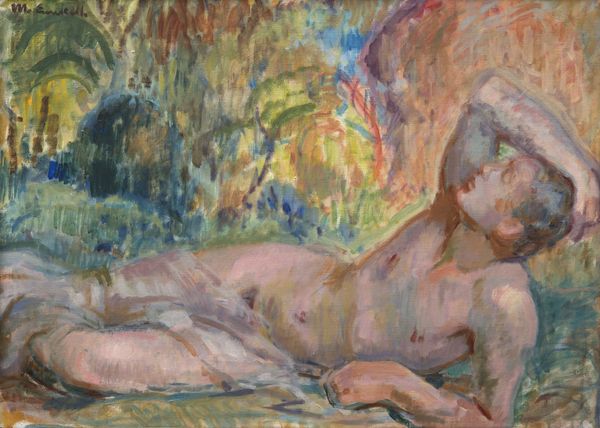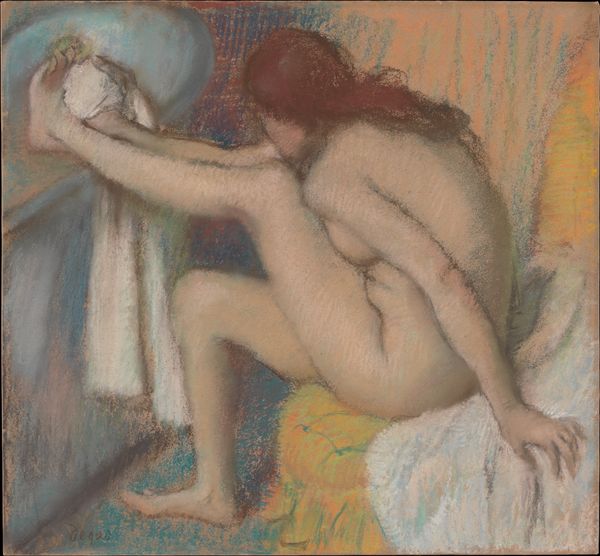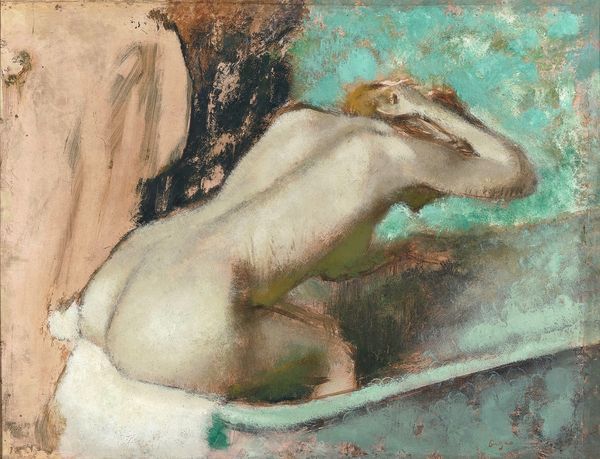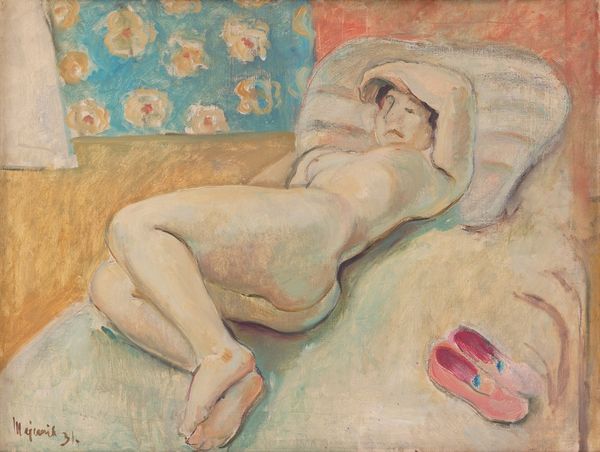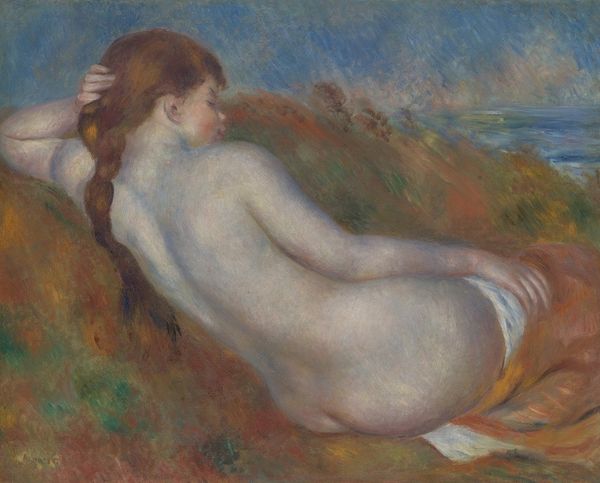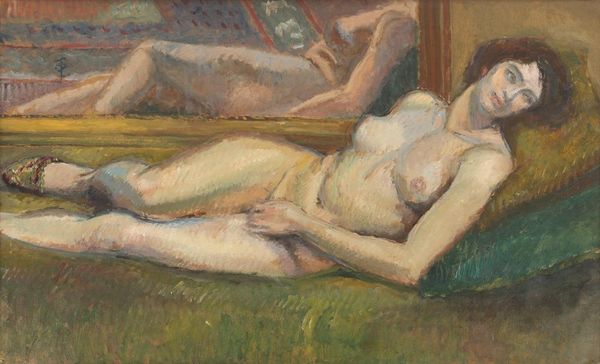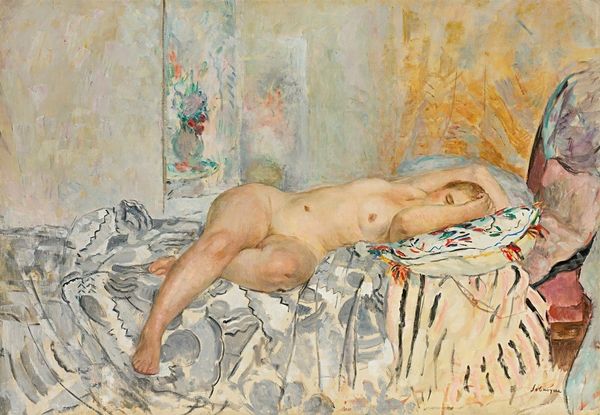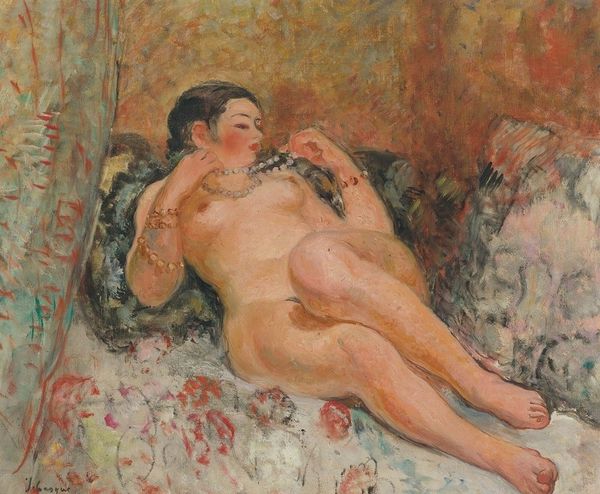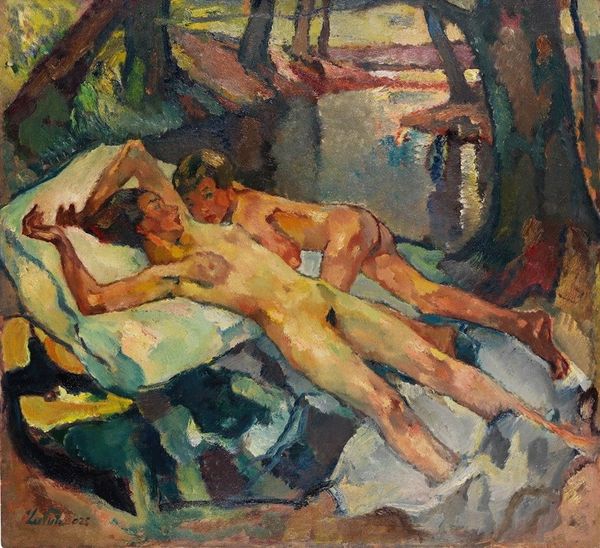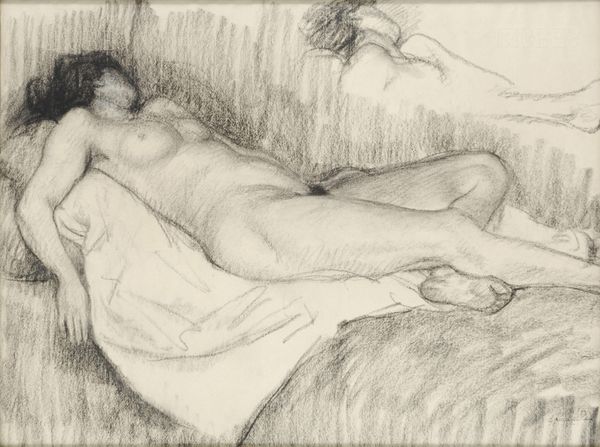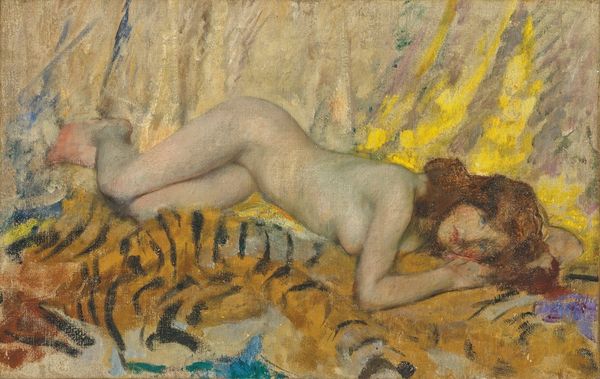
drawing, painting, oil-paint
#
portrait
#
drawing
#
painting
#
oil-paint
#
charcoal drawing
#
figuration
#
oil painting
#
expressionism
#
portrait drawing
#
nude
Copyright: Public Domain: Artvee
Curator: Edvard Munch's painting "Two Nudes", likely from around 1903, strikes me as a remarkably intimate scene. It's delicate in its rendering, wouldn't you agree? Editor: The vulnerability is palpable. There is a real lack of clear structure though, making it feel more like a fleeting impression than a posed tableau. Look at how the blue-ish mass of the couch bleeds right into the off-white wall. Curator: Indeed. While seemingly unfinished, Munch is playing with the symbolic weight of the female nude in Western art. Recall that nudes by male artists frequently appear in scenes meant for the male gaze. Considering the period and the cultural debates around female sexuality and representation, what do you think Munch contributes to this tradition, and to its disruption? Editor: Given the painting's creation near the dawn of the modern era, it embodies societal anxieties about representation itself. Notice that the figure on the left, reclining, is seemingly presented as an object, but look closely—there are no signs of sensuality in that presentation; she’s pensive, removed. The second nude appears more conscious of the viewer, perched somewhat uncomfortably, which almost reverses the paradigm, don’t you think? Curator: An intriguing observation. He does break from established norms, focusing on mood, using light and form expressively. Consider his choice of oils here—applied almost like watercolor, achieving this ephemeral, almost dreamlike quality, yet it invites our reflection. He avoids classical, ideal forms, choosing, instead, figures rendered with an arresting directness. Editor: And that directness underscores how progressive figures viewed art’s increasing function, in public life, of psychological truth-telling, challenging both institutional power and aesthetic orthodoxy, simultaneously. "Art for art’s sake," and the like. But let me ask, if you could hang it anywhere, where would you? Curator: I’d put it in a space for contemplation, inviting conversation about perception, gender, and our relationship with art itself. Editor: A bold curatorial choice; the discourse would be far livelier, I expect! Curator: A fitting aspiration for such a painter, whose artistic explorations consistently ignite profound discourse.
Comments
No comments
Be the first to comment and join the conversation on the ultimate creative platform.
